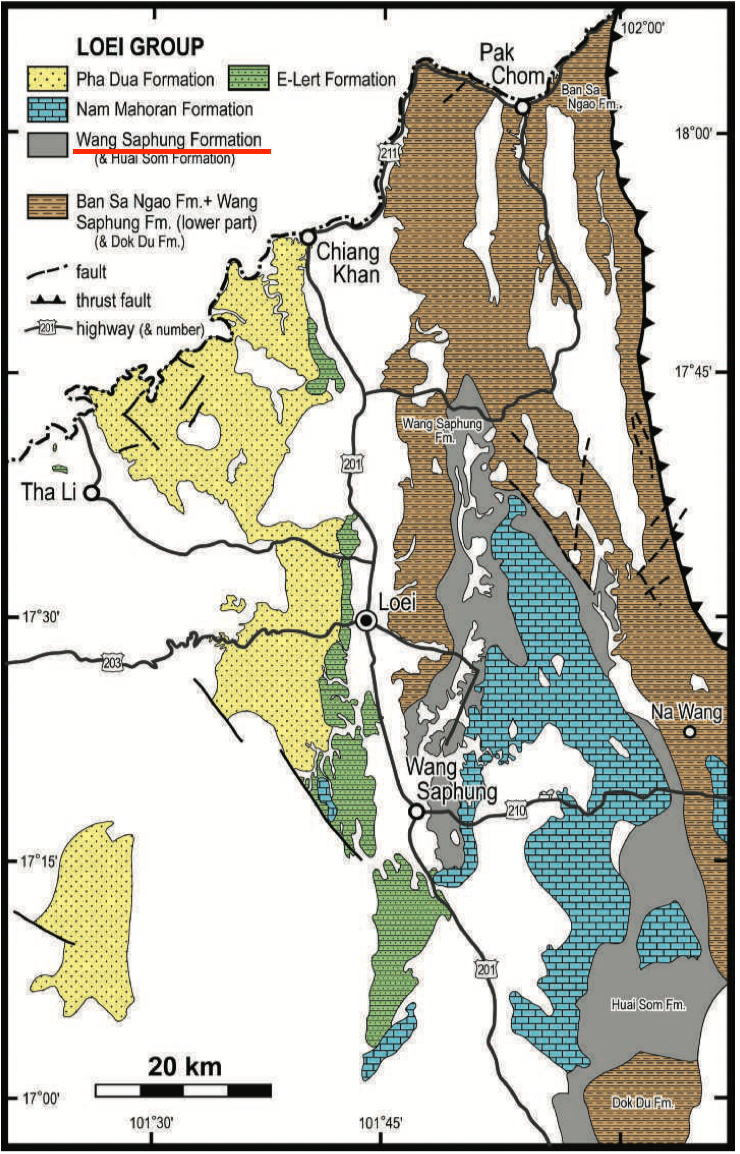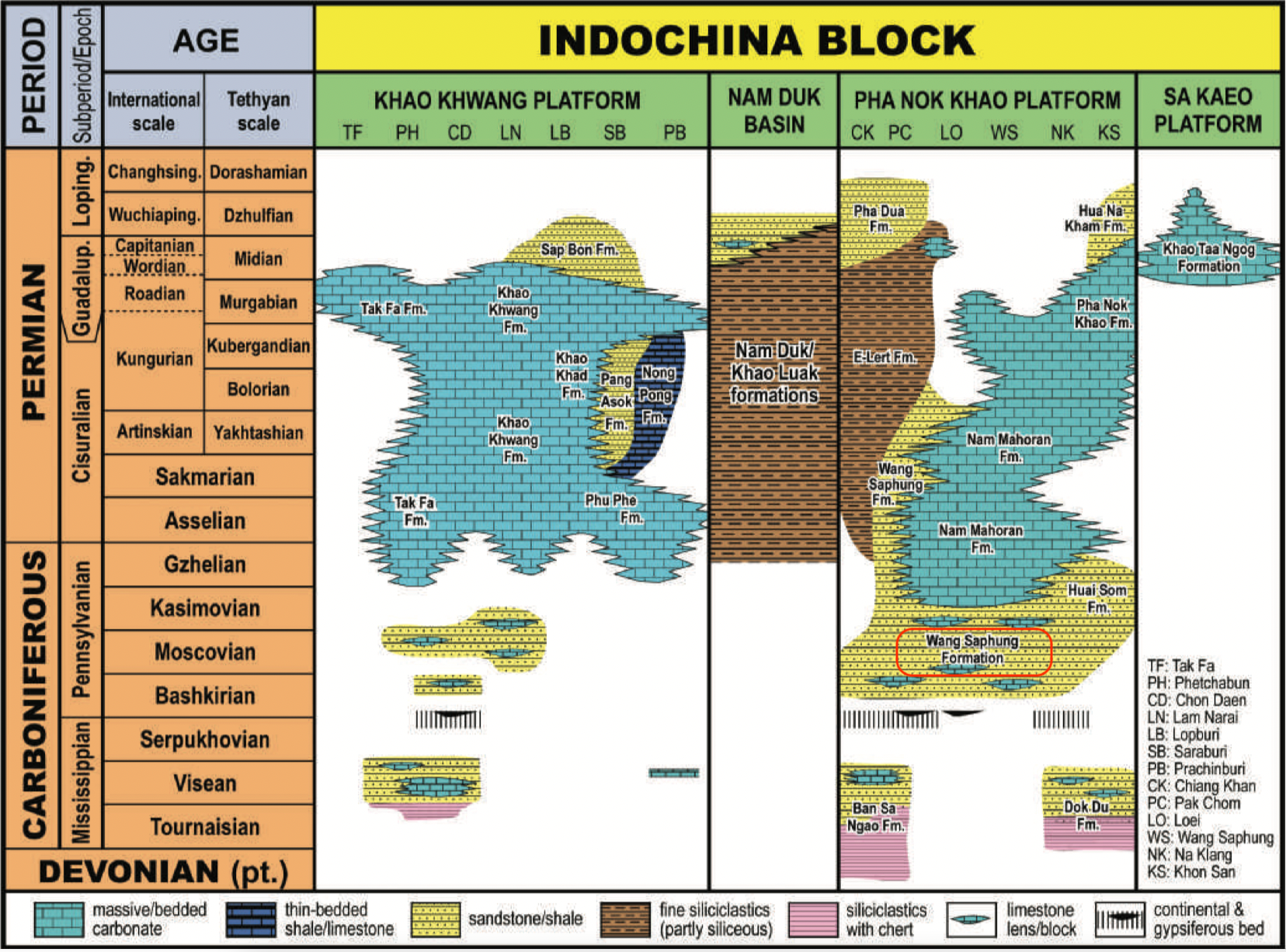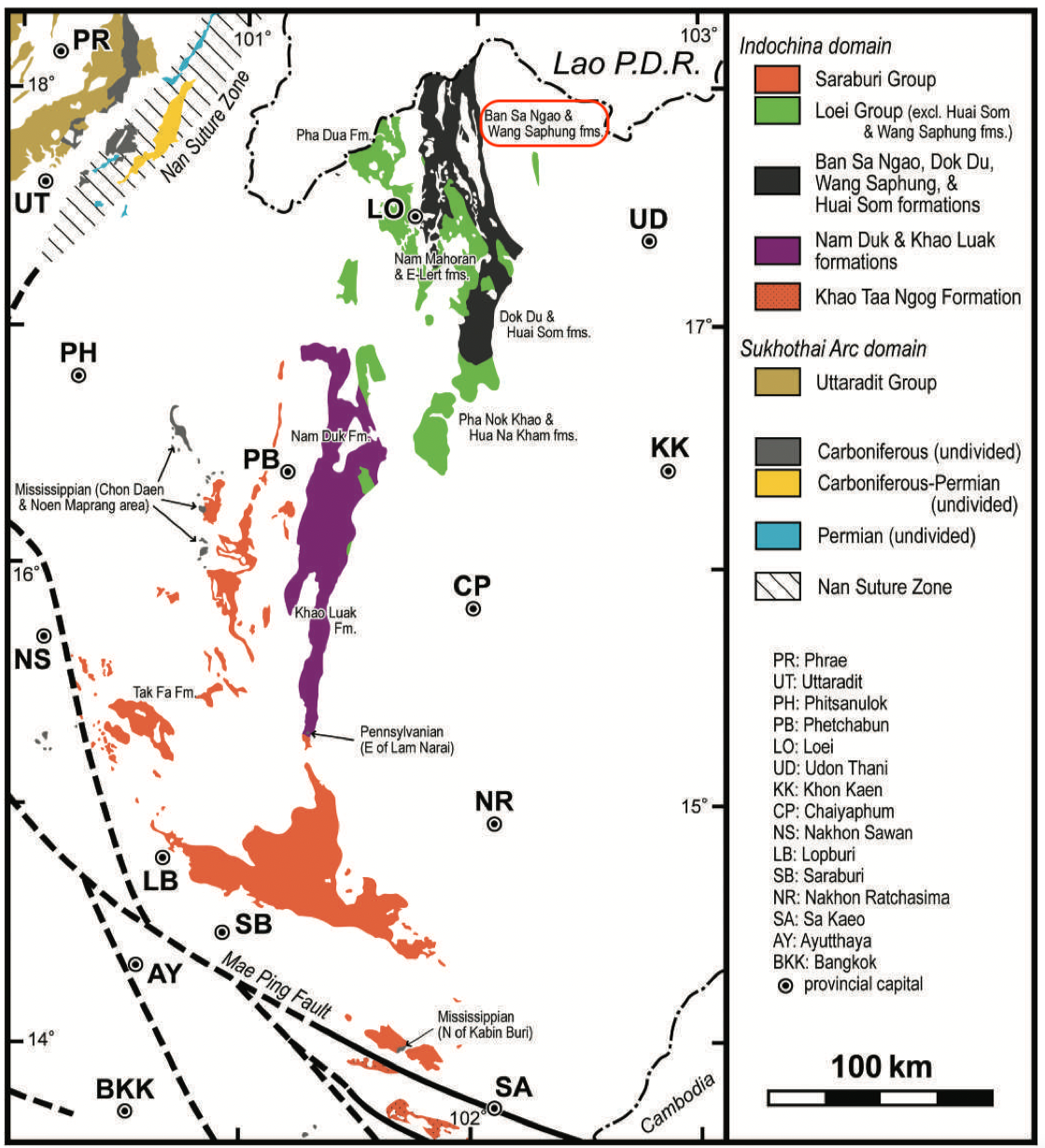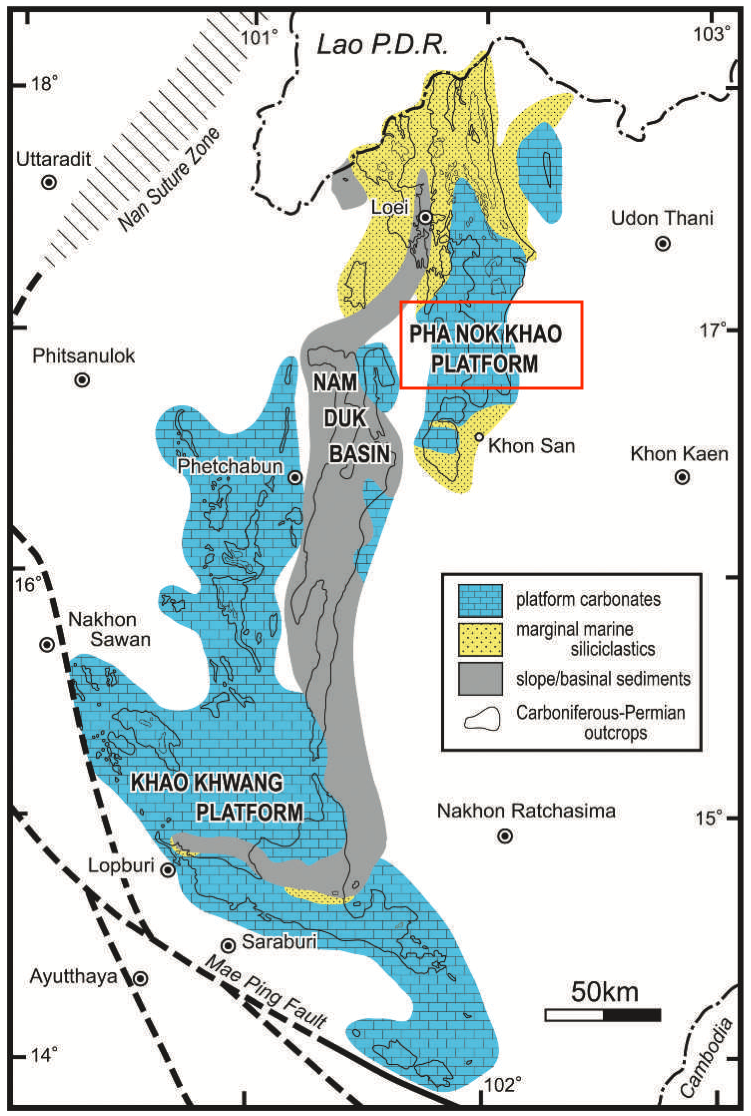Wang Saphung Fm
Type Locality and Naming
Pha Nok Khao Platform (Loei region): Its type section is at Huai Luang and Huai Bunnag (commonly transcribed as Huai Bun Nak) ca. 4 km east of Wang Saphung in Loei Province, Loei province. Extended by Ueno and Charoentitirat (2011) to also included the upper part of the former Nong Dok Bua Fm of Charoenpravat & Wongwanich (1976) and Charoenpravat et al. (1984). Lowest formation in the Loei Gr.
[Figure: Geological map of Carboniferous and Permian in Loei area, NE Thailand (Ueno and Charoentitirat 2011). Slightly modified from Vimuktanandana (1988) with additional data from Charoenpravat et al. (1984), Chonglakmani & Sattayarak (1984) and Chonglakmani et al. (1985a, 1985b). Note that, in this figure, Ban Sa Ngao and lower part of overlying Wang Saphung formations are illustrated expediently as a single stratigraphic unit, which corresponds to the Nong Dok Bua Fm of Charoenpravat et al. (1984).]
Synonym: หมวดหินวังสะพุง
Lithology and Thickness
[Figure: Carboniferous and Permian facies distribution and resultant stratigraphic subdivisions on the western margin of the Indochina Block. (Ueno and Charoentitirat 2011)]
Relationships and Distribution
Lower contact
Upper contact
GeoJSON
Fossils
"Fossils have been reported from many localities. Foraminifers (mainly fusulines), corals and cephalopods are particularly abundant in limestone and associated barite deposits. Brachiopods, ammonoids and trilobites are known from shales. Of these fossils, fusulines provide a critical key for the age assessment of the Wang Saphung Formation. The fauna includes Eostaffella, Ozawainella, Eoschubertella, Pseudostaffella, Neostaffella, Profusulinella, Fusulinella, Beedeina, Pseudotriticites, Fusulina, Quasifusulinoides, Protriticites and possibly Montiparus. They indicate late Bashkirian to middle Kasimovian ages and are the principal grounds for assigning a Pennsylvanian age to the formation. An interesting fusuline fauna provided new insights … " [Ueno and Charoentitirat (2011)]
Age
Depositional setting
[Figure: Late Paleozoic major facies subdivisions on the western margin of the Indochina Block by Ueno and Charoentitirat (2011). (Slightly modified from Wielchowsky & Young 1985).]
Additional Information



